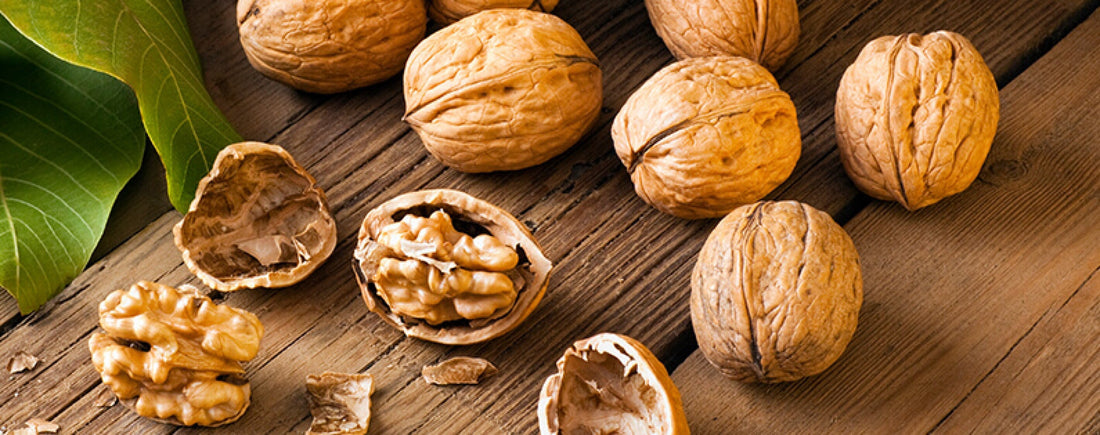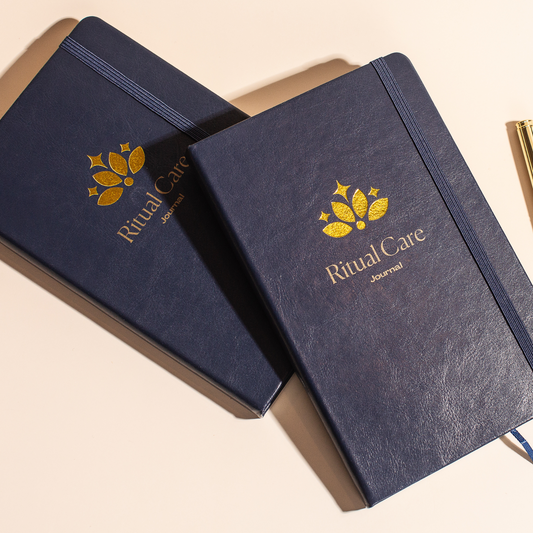The Centers for Disease Control and Prevention (CDC) reports that 100 million U.S. adults have diabetes or prediabetes. You may also know that living with diabetes can lead to many other health issues including inflammatory conditions, kidney disease, obesity, cardiovascular disease, and neurological issues.
With the epidemic of diabetes, there are some important dietary considerations to know about. On the bright side, there are some specific ingredients that you can include in your balanced diet to support your body in reversing this condition. First, let’s explore exactly what happens when one has diabetes and the difference between type 1 and type 2 diabetes.
Type 2 diabetes is a condition that does relate to diet—specifically to the elevated levels of insulin in the blood. When your body ceases responding to a diet high in excess sugars and refined carbohydrates with the appropriate levels of insulin, this is called type 2 diabetes. Type 2 diabetes and prediabetes can be both prevented and reversed with some focus in your diet.
Below you will find some foods that are helpful in regulating your blood sugar and fighting type 2 diabetes. Also important to note is to be sure that your balanced diet is high in proteins and healthy fats (such as fats from healthy oils, nuts, and seeds)—two macronutrients that ensure more stable blood sugar levels and improved insulin sensitivity, while also keeping you satiated longer between meals.
Here are seven of the best foods for diabetics.
How to use: Try starting off your morning by drinking one tablespoon in a glass of water approximately 30 minutes before eating or make into a salad dressing with equal parts olive oil, a pinch of salt, a small teaspoon of raw honey, and a touch of spicy mustard.
One study looked at a group of 12 women with non-insulin dependent diabetes (type 2 diabetes) over a four-week period. The participants were given a diet high in monounsaturated fats (from avocado and olive oil) and observed for various markers including glycemic control (the delicate balance of insulin replacement with diet and physical activity), cholesterol, and lipid profile. The study concluded that the monounsaturated fats offered a good diabetic management alternative.
How to enjoy: Avocado is a versatile food that can be enjoyed in many ways. Add half an avocado to your morning smoothie for an extra dose of healthy fats, add chopped on top of your favorite salad, slather on a piece of your favorite bread with a pinch of sea salt for a tasty avocado toast, or make into a simple guacamole with a squeeze of lemon and a dash of salt.
One study examined the impact of eating fatty fish (such as wild salmon) with and without pollutants on people with type 2 diabetes. The study noted a reduced risk of type 2 diabetes with the inclusion of pollutant-free fatty fish in the diet, while the converse—a diet high in pollutant-dense fatty fish—had a negative impact on the risk of type 2 diabetes.
This is a good reminder to maximize the health benefits of fatty fish (including salmon) by eating fish that is as pure and pollutant-free as possible.
How to enjoy: Wild salmon is a delicious protein to add into your meal plan. Try it grilled, baked, smoked, or even a quick one-sided pan-fry (skin-side down) in a dollop of avocado or coconut oil until cooked all the way through, topped with a squeeze of lemon.
One study researched a group of participants with type 2 diabetes. At mealtime, the participants received two grams of Korean red ginseng or a placebo, for 12 weeks, with no change to their current anti-diabetic regiment. The conclusion the study derived was an overall improvement in glycemic control (the delicate balance of insulin replacement with diet and physical activity).
How to enjoy: Ginseng can be included in your diet in multiple ways. Try it chopped up raw, gently cooked, taken as a supplement, made into a tonic or tea, or even finely shredded and sprinkled atop a delicious stir-fry.
Flaxseeds are rich in plant-based oils of α-linolenic acid (ALA, omega-3 fatty acid) and lignans as well as high-quality fiber.
Flaxseeds have been shown to be a power food (because of their high-quality fats and oils) for diabetes management and digestive healing as well as to simply boost the nutrient density of any meal.
How to enjoy: Try including flax seeds in your morning smoothie, reach for a flax cracker instead of a regular cracker, or use flax oil on top of salads or steamed vegetables.
One study looked at a group of people with either type 2 diabetes or prediabetes and the effect of a regular consumption of walnuts compared to no nut consumption. What the study concluded was that those who ate a regular (self-reported) amount of walnuts showed a lower risk of diabetes and blood glucose levels (especially notable in women).
How to enjoy: Try walnuts raw or roasted as a tasty on-the-go snack, or an addition to any salad or pudding with chia seeds, or sprinkle on top of yogurt and fruit. Have you tried walnut butter? Try a dollop of walnut butter spread on a slice of apple. You can also replace the more traditional pine nuts with walnuts in most pesto recipes.
Cinnamon is a unique ingredient in that it boosts chromium levels in your blood. Chromium has an important role in the regulation of insulin and blood sugar making cinnamon a great addition to your diet when you are looking to combat type 2 diabetes and prediabetes.
One study confirmed that an intake of one, three, or six grams of cinnamon per day lowered serum glucose, triglyceride, LDL cholesterol, and total cholesterol levels in participants with type 2 diabetes. This may show an effective way to decrease some of the risk factors (and other health complications) associated with type 2 diabetes.
How to enjoy: There are so many easy ways to include more cinnamon in your diet. You can use cinnamon sprinkled on your breakfast oats, yogurt, or pudding with chia seeds. You can add a dash to your smoothies, sprinkle some on top of your latte, enjoy in a cup of chai, or simply try it in a glass of warm almond milk for a naturally sweet and warming flavor.
Food is such a powerful medicine. Your fork may be the most important tool in transforming your health. These seven are good foods for diabetics; they are wonderful ways to support your body in creating a healthy blood sugar response, balancing insulin levels, and combating type 2 diabetes (and prediabetes). Here’s to powering up your meal plan!
*Editor’s Note: The information in this article is intended for your educational use only; does not necessarily reflect the opinions of the Chopra Center's Mind-Body Medical Group; and is not a substitute for professional medical advice, diagnosis, or treatment. Always seek the advice of your physician or other qualified health providers with any questions you may have regarding a medical condition and before undertaking any diet, supplement, fitness, or other health program
Discover Deepak Chopra’s secrets to stay energetic and balanced all year long with our self-paced online course, Secrets to Vibrant Health. Learn More.
With the epidemic of diabetes, there are some important dietary considerations to know about. On the bright side, there are some specific ingredients that you can include in your balanced diet to support your body in reversing this condition. First, let’s explore exactly what happens when one has diabetes and the difference between type 1 and type 2 diabetes.
About Diabetes
Often called juvenile diabetes, type 1 diabetes is an autoimmune condition whereby the body attacks the insulin-producing cells in the pancreas (pancreatic beta cells) and hence, the body stops producing insulin. There are no means for preventing or curing type 1 diabetes; it is not considered to be diet related. Research is still underway in determining the exact factors that cause type 1 diabetes.Type 2 diabetes is a condition that does relate to diet—specifically to the elevated levels of insulin in the blood. When your body ceases responding to a diet high in excess sugars and refined carbohydrates with the appropriate levels of insulin, this is called type 2 diabetes. Type 2 diabetes and prediabetes can be both prevented and reversed with some focus in your diet.
Below you will find some foods that are helpful in regulating your blood sugar and fighting type 2 diabetes. Also important to note is to be sure that your balanced diet is high in proteins and healthy fats (such as fats from healthy oils, nuts, and seeds)—two macronutrients that ensure more stable blood sugar levels and improved insulin sensitivity, while also keeping you satiated longer between meals.
Here are seven of the best foods for diabetics.
1. Apple Cider Vinegar
Apple cider vinegar (or ACV)—created from apples broken down by a fermentation process—is an ancient tonic known for its diverse health benefits. Apple cider vinegar is specifically known for its high probiotic count. ACV has also been shown to improve insulin response in patients with insulin resistance or type 2 diabetes. ACV is an easy, inexpensive, and effective addition to your daily health regimen—one of the best food choices for diabetes control.How to use: Try starting off your morning by drinking one tablespoon in a glass of water approximately 30 minutes before eating or make into a salad dressing with equal parts olive oil, a pinch of salt, a small teaspoon of raw honey, and a touch of spicy mustard.
2. Avocados
Avocados are grown in almost every tropical climate around the world. Avocado is a great source of healthy fats (monounsaturated and polyunsaturated), vitamin E, and chlorophyll, making it a heart-healthy, cholesterol-lowering, and blood-sugar stabilizing diabetic-friendly food to include in your diet.One study looked at a group of 12 women with non-insulin dependent diabetes (type 2 diabetes) over a four-week period. The participants were given a diet high in monounsaturated fats (from avocado and olive oil) and observed for various markers including glycemic control (the delicate balance of insulin replacement with diet and physical activity), cholesterol, and lipid profile. The study concluded that the monounsaturated fats offered a good diabetic management alternative.
How to enjoy: Avocado is a versatile food that can be enjoyed in many ways. Add half an avocado to your morning smoothie for an extra dose of healthy fats, add chopped on top of your favorite salad, slather on a piece of your favorite bread with a pinch of sea salt for a tasty avocado toast, or make into a simple guacamole with a squeeze of lemon and a dash of salt.
3. Wild Salmon
Wild salmon is loaded with many nutrients you will want in your diabetic prevention and reversal regiment. Wild salmon is full of omega-3 fatty acids and collagen, making wild salmon a potent food rich in health-promoting natural fats.One study examined the impact of eating fatty fish (such as wild salmon) with and without pollutants on people with type 2 diabetes. The study noted a reduced risk of type 2 diabetes with the inclusion of pollutant-free fatty fish in the diet, while the converse—a diet high in pollutant-dense fatty fish—had a negative impact on the risk of type 2 diabetes.
This is a good reminder to maximize the health benefits of fatty fish (including salmon) by eating fish that is as pure and pollutant-free as possible.
How to enjoy: Wild salmon is a delicious protein to add into your meal plan. Try it grilled, baked, smoked, or even a quick one-sided pan-fry (skin-side down) in a dollop of avocado or coconut oil until cooked all the way through, topped with a squeeze of lemon.
4. Ginseng
Ginseng is noted as one of the most popular and best-selling natural remedies worldwide today. Ginseng may be an important ingredient to explore as an effective way to lower blood sugar levels in those struggling with type 2 diabetes (or prediabetes).One study researched a group of participants with type 2 diabetes. At mealtime, the participants received two grams of Korean red ginseng or a placebo, for 12 weeks, with no change to their current anti-diabetic regiment. The conclusion the study derived was an overall improvement in glycemic control (the delicate balance of insulin replacement with diet and physical activity).
How to enjoy: Ginseng can be included in your diet in multiple ways. Try it chopped up raw, gently cooked, taken as a supplement, made into a tonic or tea, or even finely shredded and sprinkled atop a delicious stir-fry.
5. Flaxseed
Flaxseeds are one of the oldest crops that grows in Europe, Asia, and in the U.S. and have been used back in the beginning of civilization.Flaxseeds are rich in plant-based oils of α-linolenic acid (ALA, omega-3 fatty acid) and lignans as well as high-quality fiber.
Flaxseeds have been shown to be a power food (because of their high-quality fats and oils) for diabetes management and digestive healing as well as to simply boost the nutrient density of any meal.
How to enjoy: Try including flax seeds in your morning smoothie, reach for a flax cracker instead of a regular cracker, or use flax oil on top of salads or steamed vegetables.
6. Walnuts
Walnuts are one of the highest sources of omega-3 oils (in the form of alpha-linolenic acid) of all the nuts. Walnuts (like many other fat-rich nuts) are a great source of healthy protein and fat, giving you a satiating and blood-sugar stabilizing snack.One study looked at a group of people with either type 2 diabetes or prediabetes and the effect of a regular consumption of walnuts compared to no nut consumption. What the study concluded was that those who ate a regular (self-reported) amount of walnuts showed a lower risk of diabetes and blood glucose levels (especially notable in women).
How to enjoy: Try walnuts raw or roasted as a tasty on-the-go snack, or an addition to any salad or pudding with chia seeds, or sprinkle on top of yogurt and fruit. Have you tried walnut butter? Try a dollop of walnut butter spread on a slice of apple. You can also replace the more traditional pine nuts with walnuts in most pesto recipes.
7. Cinnamon
You have surely tried the very popular spice, cinnamon. It is naturally sweet and used in many dishes and libations far and wide around the globe. Cinnamon comes from the inner bark of a variety of trees that belong to the genus Cinnamomum. When it dries, it naturally curls up into quills—what you would recognize as cinnamon sticks—before being ground into the common cinnamon spice.Cinnamon is a unique ingredient in that it boosts chromium levels in your blood. Chromium has an important role in the regulation of insulin and blood sugar making cinnamon a great addition to your diet when you are looking to combat type 2 diabetes and prediabetes.
One study confirmed that an intake of one, three, or six grams of cinnamon per day lowered serum glucose, triglyceride, LDL cholesterol, and total cholesterol levels in participants with type 2 diabetes. This may show an effective way to decrease some of the risk factors (and other health complications) associated with type 2 diabetes.
How to enjoy: There are so many easy ways to include more cinnamon in your diet. You can use cinnamon sprinkled on your breakfast oats, yogurt, or pudding with chia seeds. You can add a dash to your smoothies, sprinkle some on top of your latte, enjoy in a cup of chai, or simply try it in a glass of warm almond milk for a naturally sweet and warming flavor.
Food is such a powerful medicine. Your fork may be the most important tool in transforming your health. These seven are good foods for diabetics; they are wonderful ways to support your body in creating a healthy blood sugar response, balancing insulin levels, and combating type 2 diabetes (and prediabetes). Here’s to powering up your meal plan!
*Editor’s Note: The information in this article is intended for your educational use only; does not necessarily reflect the opinions of the Chopra Center's Mind-Body Medical Group; and is not a substitute for professional medical advice, diagnosis, or treatment. Always seek the advice of your physician or other qualified health providers with any questions you may have regarding a medical condition and before undertaking any diet, supplement, fitness, or other health program
Discover Deepak Chopra’s secrets to stay energetic and balanced all year long with our self-paced online course, Secrets to Vibrant Health. Learn More.






















